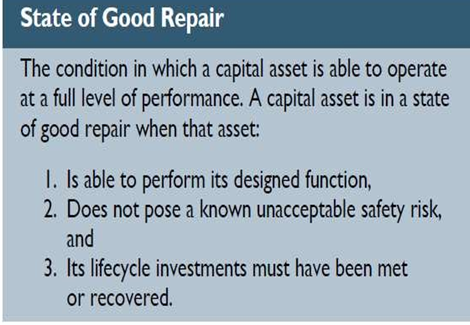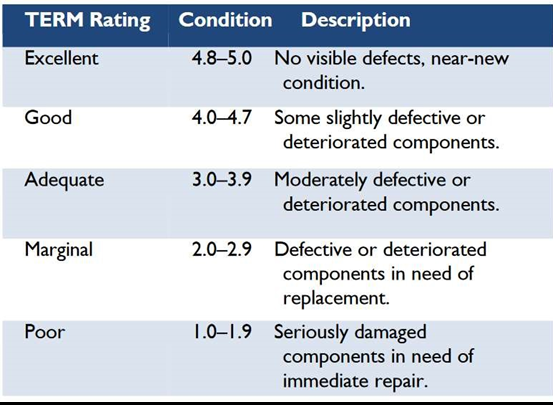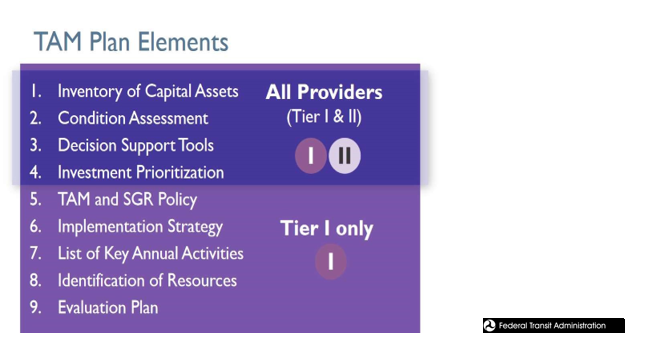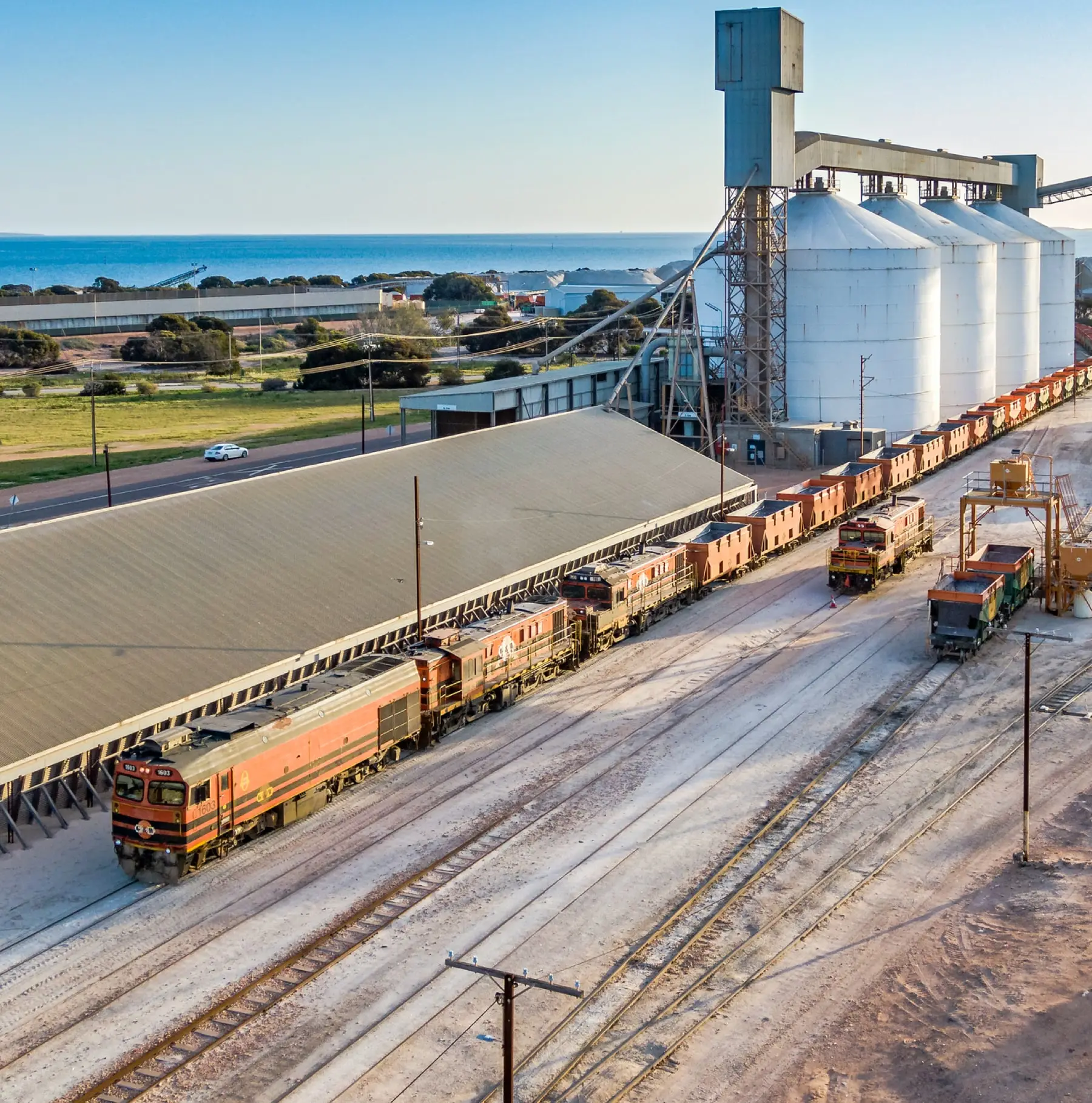The first rule of Fight Club was, “You don’t talk about fight club.” The first rule of State of Good Repair/Asset Management (SGRAM) is; you DO talk about SGRAM! If you do not have an inventory of your assets how do you know if they are in a state of good repair? This would include all track, bridge, tunnel, electrical, 3rd rail or Catenary, PTC/ATC, signals, switch and crossing assets. Having a correct asset inventory is essential in a properties SGRAM journey.
In building your asset inventory be sure to brainstorm and capture important data fields for your asset type. Common to all assets should be an “in service” or “installed” date. This should be followed by an “Estimated Useful Life” or “Useful Life Benchmark” field. The combination of these two fields will allow you to project a replacement date based solely upon age.
Some asset types will need to be changed due to age but mostly condition and maintenance/rehab costs would be the leading indicators of needing asset rehab or replacement. Be sure to have a condition rating field on your asset record.
Some asset indicators can be set-up to capture usage. For example, how many times a switch throws or # of trains or tonnage on a track asset.
You should also think of methodology to capture performance restrictions against assets. In the railroad industry slow orders, out-of-service (OOS) and FRA Part 213.9 (b) are a few examples.
Below is a table from the Federal Transportation Administration (FTA), defining State of Good Repair.

So, as we can see from the FTA definition, we need to include all the asset fields mentioned above to determine the SGR rating for our assets.
Please keep in mind that the asset record is alive and will need continuing updates. In the railroad and transit industries, track inspection intervals typically follow the Federal Railroad Administration’s guidelines and provides a means of updating current condition ratings.
Currently the FTA requires Inventory of all wayside assets with the date they were installed or went in service along with the monthly reporting requirement of the percentage of track under a performance restriction (slow order) also mentioned above. The track inventory is broken down by categories such as: Ballasted Track, Tangents, Embedded Track, Elevated Aerials, various types of Tunnels, Curves, Single Crossovers, Double Crossovers, Substation Buildings, Substation Equipment, Train Control & Signaling, etc.
Although percentage of trackway under a performance restriction is currently the only SGR reporting requirement to FTA/NTD, this does not guarantee your system is in SGR!
Agencies should implement condition rating processes for components within the fixed guideway class.
Track Quality Indexes, Rail Profile Measurements, Geometry, Ultrasonic Rail Inspections, etc. should continue to be utilized as these are integral for Capital Planning.
Although currently only required by the FTA for facilities, equipment and rolling stock classes, the condition rating scale below is an excellent tool for measuring State of Good Repair for Track, Bridges, Switches, Electrical, etc.

Along with the all requirements mentioned above, transit and commuter providers are required by the FTA to develop Transits Asset Management Plans which contain the following elements in the table below:

While this is not a requirement of the FRA, it is an industry recognized best practice for asset management and ensuring state of good repair.
This concludes this installation of “SGRAM 101” and we at Railroad Software hope this has proved beneficial to you.
Please check out TrackAsset’s page for more information or to schedule a demo.
Follow Railroad Software on LinkedIn for more news and updates.

